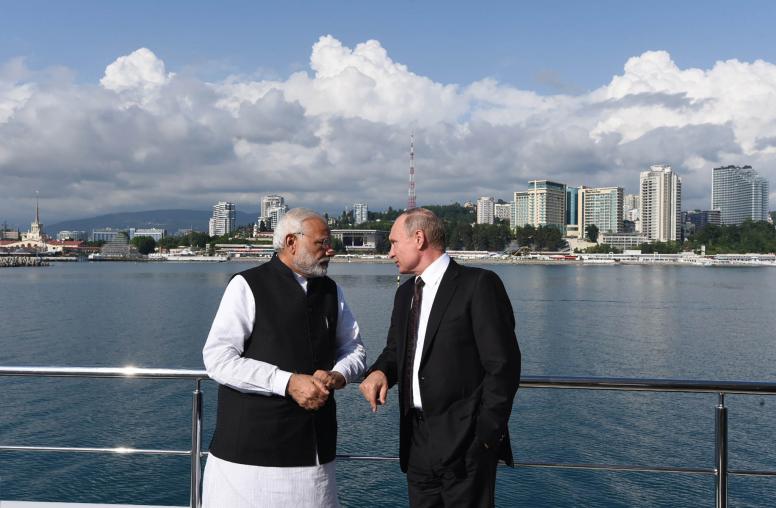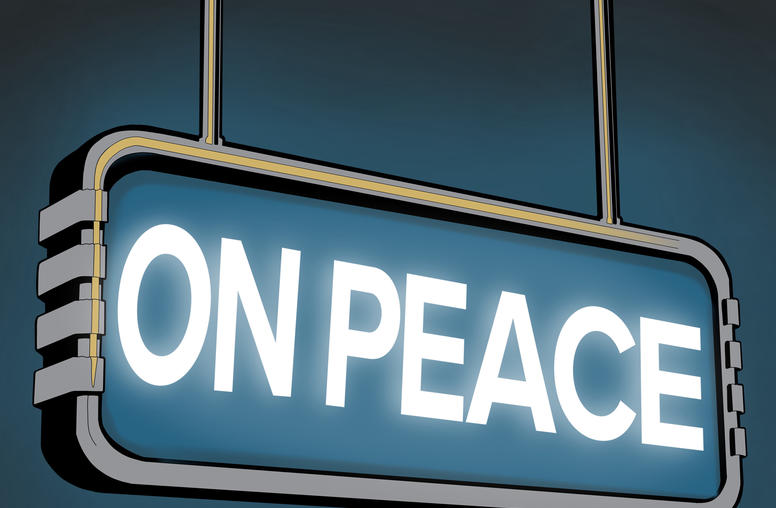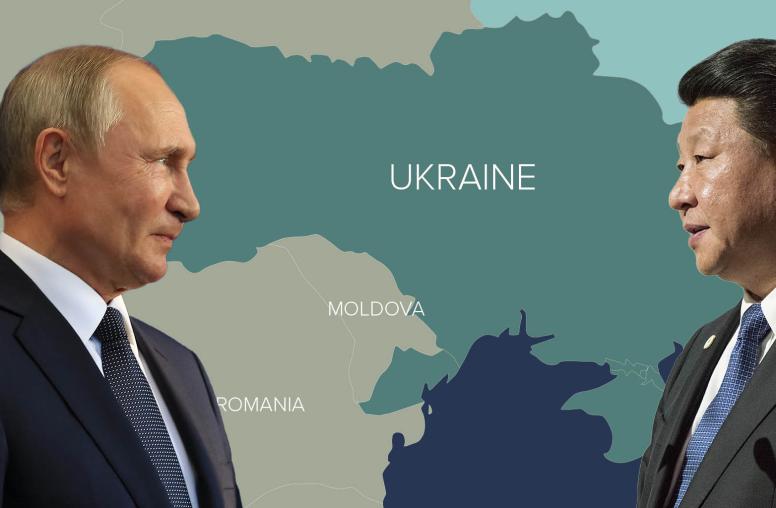Putin’s War Backfires as Finland, Sweden Seek to Join NATO
The Russian autocrat aimed to check NATO’s expansion but has instead strengthened the alliance.
Only three months into Russia’s brutal invasion of Ukraine, the geopolitical ripple effects are being felt across the European continent. Motivated by Moscow’s aggression, Finland and Sweden have applied to join NATO, ending decades of both states’ respective non-aligned status. Finnish and Swedish NATO accession would boost the capabilities and defensibility of the alliance. Their joining NATO is a rebuke of Russian President Vladimir Putin, who has bristled over the alliance’s post-Cold War expansion and used it as a pretext for his Ukraine incursion.

USIP’s A. Wess Mitchell explores the implications of NATO expansion for the war in Ukraine, Putin’s potential response and what it means for the security architecture and geopolitics of Europe.
What are the short-term implications of NATO expansion, specifically for the war in Ukraine? Could it prolong the war or compel Putin to take desperate measures, like deploying WMDs?
The decision by Finland and Sweden to apply for NATO membership demonstrates the unintended consequences for Putin of his war in Ukraine. While his immediate objective was to defeat and subjugate Ukraine, he also wanted to create a kind of demonstration effect of Russian strength and, as the pre-war Russian diplomatic note made plain, push NATO back from Russia’s borders. The war has achieved exactly the opposite. Now, Russia will have even more NATO presence on its borders, both through the addition of hundreds of miles of NATO territory to the Russian frontier, and through the deployment of Western troop presence in Central Europe. So, the war is backfiring for Putin not only militarily but geopolitically.
The immediate implication is that Putin will have to give military attention to Russia’s northwestern flank at a moment when he needs all the firepower he can muster for the conflict in Ukraine. Rather than prolonging the war, if anything, NATO’s Nordic expansion could shorten it by increasing the military demands on Russia. Politically, it may increase the pressure on Putin from within the Russian elite to alter course, since it is a further illustration, alongside the effects of sanctions and losses in the war itself, of the costs of his aggressive foreign policy. Remember, Putin’s central value proposition, and the key to his legitimacy in the eyes of the Russian elite, is his claim to military competence — specifically, the ability to be able to rebuild Russian power and prestige by the effective use of the military. If the war exposes that as a fiction, as it is now doing, and also amasses sufficient geopolitical, economic and political costs along the way, then Putin’s value proposition as a leader is seriously eroded in Kremlin circles, and among the Russian populace as well.
Aside from immediate measures and threats (e.g., cutting off energy supplies to Finland, Putin’s threat of a “technical military” response), how do you expect Putin to respond if Finland and Sweden formally join NATO?
Putin’s dilemma is that he has to respond in some way to Finland’s and Sweden’s NATO moves to avoid seeming weak, yet he has few obvious or effective response options. For years he has threatened both countries that joining NATO would lead to negative consequences, so he can’t afford to not respond in some fashion. The easiest response is to cut energy exports, as he has done. But both countries can diversify energy sources without excessively straining their economies. Militarily, Putin’s usual response would be to send Russian conventional forces to the border with Finland and to deploy Russian planes and ships to the eastern Baltic. But he needs all the military power he can get in Ukraine.
So, Putin’s most likely response will be to deploy missiles to the border with Finland and to Kaliningrad. Russia possesses a large nuclear arsenal, including numerous low-yield, or tactical, nuclear weapons. Putin is likely to deploy such weapons in a way that plays to Finnish and Swedish fears that entering NATO will trigger an aggressive Russian response. He is aware that there are strong pacifist traditions in both countries. In the old days, stoking those dynamics by aggressive moves to create pressure on Finnish and Swedish governments might have had its desired effect. But doing so now is only likely to increase Finnish and Swedish support for NATO membership, given what they’ve seen happening in Ukraine. That’s what war does — it creates fear, and fear leads peaceful nations to seek security through alliances.
How would Finland’s and Sweden’s NATO accession impact the geopolitics of Europe? Would it ultimately boost European security?
The United States should always be judicious about adding new treaty allies — it’s a serious thing indeed to widen the U.S. global defensive perimeter. In the case of Finland and Sweden, I see the impact as positive; their accession will round off NATO geographically and improve Europe’s defensibility in a crisis. We should be clear that both Sweden and Finland will need to step up defense spending, along with the rest of Europe. But both have serious, professional militaries with specialized capabilities and a long track record of partnering with NATO. Finland has a serious defensive capability, including one of the largest artillery forces in Europe, and nationwide participation in the reserves like the Swiss or Israeli model. Their long border with Russia is dotted with thousands of lakes and is very defensible, as we saw in the 1930s Winter War. Sweden brings significant naval and especially anti-submarine capabilities.
The main positive however is geographic and strategic in nature — bringing these states into NATO will significantly mitigate the alliance’s biggest military vulnerability, which is the exposed geography of the Baltic States. If you look at a map, the Baltic States form an exposed salient in the northeastern corner of the Alliance. It would probably be hard to get reinforcements to them in a crisis. Adding Finland and Sweden to NATO mitigates that vulnerability and makes the Baltic States a much less inviting target. It complicates the Russian theory of victory in the Baltic, which has centered on creating a fait accompli by grabbing a strip of territory and then waiting for NATO to try to get enough troops to the region to evict them. Adding Finland and Sweden to NATO makes the Baltics less isolated, more defensible and easier to support in a crisis, which in turn probably makes Russia less likely to attack them in the first place, and therefore makes war less likely.
NATO accession also removes some unhelpful ambiguity about Finland and Sweden themselves. We saw in 1914 with Belgium how ambiguity about whether and how to defend a neutral can increase the calculation for war on the part of an aggressor. Prior to them joining NATO, how to respond if Russia were to attack one of these two states would have been a difficult question for the United States. That very ambiguity could invite the war we want to avoid. NATO membership removes that ambiguity. It also allows us the incorporation of Finland and Sweden into NATO contingency planning.
Adding these two countries to NATO is also a good thing from the perspective of U.S. global strategy. Washington has to look at Europe not in isolation but alongside the reality of U.S. commitments in the Indo-Pacific. It’s in America’s interest for Europe to be as defensible, uninviting to aggression and defensively capable as possible to assure the stability of Asia as well. To my mind, adding serious, security-minded players like Finland and Sweden to NATO, along with following through on the increased defense commitments that the war has prompted, aids in that goal.
A. Wess Mitchell is a senior advisor for the Russia and Europe Center at USIP.



